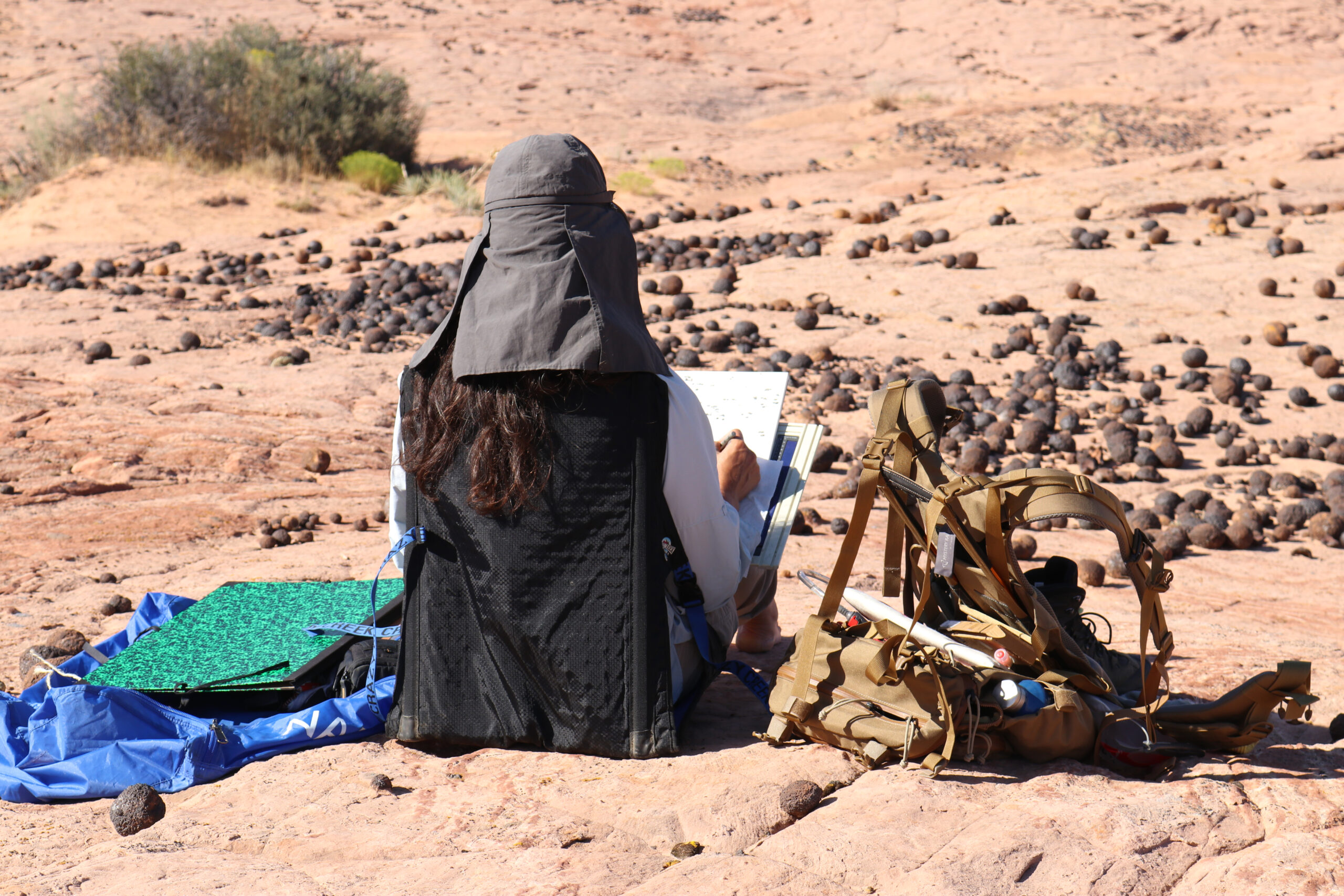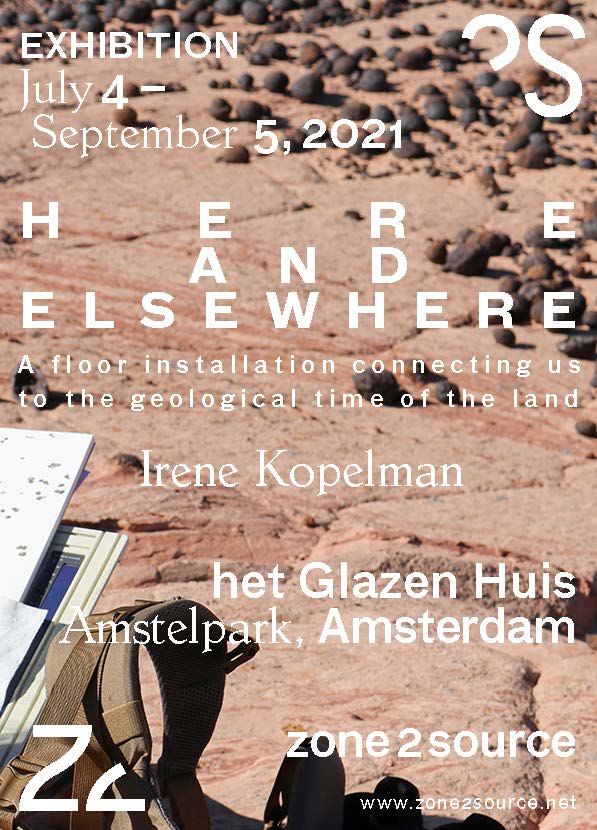Finissage with artist talk Irene Kopelman and Marjorie Chan on September 12 from 3:00 PM – 6:00 PM
[read more below the photo]

Here and Elsewhere is a new installation by the Amsterdam artist Irene Kopelman. The artwork aims to restore our connection with the environment by providing insight into the different dimensions of the Earth’s geology and our global ecology. The installation is inspired by Kopelman’s ongoing interest in geological time and scale, and based on her experience with the almost otherworldly landscape of the Grand Staircase-Escalante National Monument in the US.
The artwork Here and Elsewhereis a 1:1 replica of the ‘concretions’ – also called Moqui Marbles – found only in this area and on Mars. The artist painstakingly measured and mapped part of this landscape during her visit to Escalante. The installation is a reconstruction of a number of the ‘concretions’, according to their exact arrangement and distances in the landscape. By recreating it in Zone2Source, Kopelman transports this unique, completely natural landscape with its many dimensions to a completely human-designed city park in Amsterdam.
In August 2021, Irene Kopelman gave a number of workshops for children and a workshop for young adults (18-23 years) as part of the Zone2Source Midsummer Mokum program.
The exhibition is supported by the Amsterdam Fund for the Arts and the Niemeijer Fund and is realized in collaboration with the Amsterdam ceramics workshop Koloriet.


![]()


Biography
Irene Kopelman was born in Cordoba, Argentina, in 1974. She attended the School of Arts of the National University of Cordoba, where she received her bachelor’s and master’s degrees in painting (1994 – 2002). In 2002, Kopelman was accepted into the two-year international residency program at the Rijksakademie van Beeldende Kunsten in Amsterdam. She currently divides her time between Amsterdam, Argentina and the regions where her work and research take her.
In the Netherlands, Kopelman began researching the representations of landscapes as recorded by 18th- and 19th-century naturalists. This period of exploration, during the Age of Enlightenment, is richly archived in museums around the world. A series of collaborations within museum collections such as the Geological Museum (Artis, Amsterdam), the Entomological Collection (University of Amsterdam-UvA), the Teylers Museum (Haarlem), the Natural History Museum in London and the Astronomical Observatory in Cordoba (Argentina) led to different projects.
After working with museum collections for a number of years, Kopelman became curious about the process of personal confrontation with the landscape. This question led to projects such as ‘The Levy’s Flight’ (2009), which began with an exploration of the lava fields in Hawaii National Park on the island of Hawaii. In 2010, Kopelman joined a polar research team on a sailboat heading from Argentina to Antarctica. She worked plein air in the Antarctic landscape. ’50 Meters Distance or More’ was the resulting exhibition which included a series of drawings, paintings and an artist’s book of the same name.
Her interest in interdisciplinary practices led her to co-found the Uqbar Foundation with the artist Mariana Castillo Deball – a platform for building dialogue between different areas of knowledge. This resulted in projects such as ‘Zeno Reminder’, an installation at Performa 09, New York (2009) and the exhibition ‘A for Alibi’, de Appel, Amsterdam (2007).
Kopelman has always believed in drawing as a tool to understand the world around her and in art as a form of knowledge. This led to an ongoing collaboration with Roma Publications. A series of artist books entitled ‘Notes on Representation’ followed. Based on this interest, she did a Ph. (D) in Fine Arts in collaboration with the Utrecht Graduate School of Visual Art and Design and The Finnish Academy of Fine Arts, completed in 2011.
Her proximity to institutions led Kopelman to observe the methodologies of scientists at work in the field. In 2012, Kopelman spent a period at the Manu Learning Centre, Madre de Dios, Peru, after which she joined a group of 40 scientists from the Sabah Parks in Malaysia and the Netherlands Center for Biodiversity Naturalis (NCB) on a expedition to Mount Kinabalu in Malaysia.
One of the most important aspects of nature lies in its constant change, creating new shapes, patterns and variations. Scientists who study nature identify these patterns and set up large-scale and long-term experiments to monitor these changes over time. By working close to them, the artist gets into their rhythm. The process of drawing (actual and metaphorical) while exposed to such constraints has become one of the core aspects of Kopelman’s practice.

Read the exhibition brochure here.
The Glass House